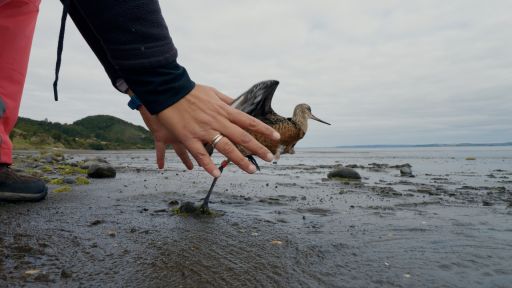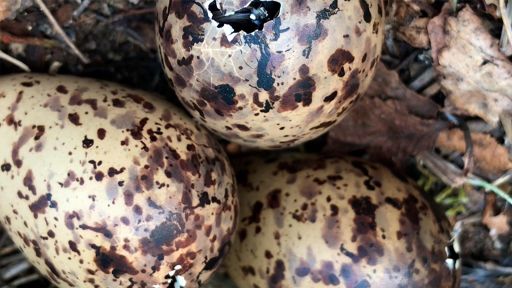The first few weeks of life are especially perilous for shorebird chicks. Only about a quarter of Red Knot chicks live long enough to journey south.
Features



- [Announcer] For the Red Knot chicks, the first few weeks of life are especially perilous.
(bird chirping) Only about a quarter of them will live long enough to make the journey south.
- [Jan] He's going.
There he is.
There we go.
Do your best, man.
- [Announcer] But Jan's main concern is that even those that survive will be smaller than they ought to be.
- [Jan] Three weeks after the snow has melted, there is the insect peak on which the chicks can feed.
With the rapid warming of the Arctic, the summer has already started.
These insects are emerging earlier from the soil.
But what the birds do not do is adjust their travel schedule.
So nowadays these birds in the Arctic arrive too late for the chicks to make use of this burst of insects.
And so they don't have good growing opportunities, and that makes these birds smaller than they actually should be.
(bird wings flapping) - [Announcer] For the Godwit chicks too, it's a race against time.
- Once the chicks hatch, both parents take care of the chicks for at least the first three weeks or so that they're around.
But then at some point, the female will actually take off and it'll just be left up to the male.
And the male will see the chicks through to fledgling before he too takes off.
And then the chicks are left all alone.
(birds chirping) (wind whooshing) - As the days shorten in the Arctic, the young shorebirds embark on their first and most dangerous migration.
Their maiden flight is a miracle and a mystery.
They're going home.
A home they've never seen, but somehow always known.
- The first southward migration to me just seems epically difficult.
You're making these incredible flights having never done it before, and that alone, if you didn't survive that, it wouldn't surprise me.
And then when you throw on top of it the threats that birds are facing at each and every point during the course of their migration, hurricanes, droughts in the Mid-Continent, hunting.
(gun booms)
